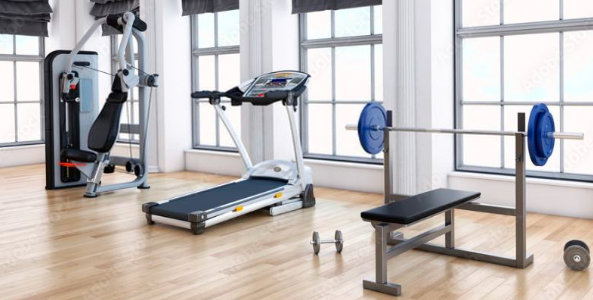At the Châteaudun detention center: reintegration to "avoid the detainee, alone in the parking lot, after ten years in prison"
The closed educational center of Dreux on the way to reopening in 2022
It's late morning in Châteaudun and the prison counselor for integration and probation (CPIP) is on duty for new arrivals. She must meet two detainees, transferred two days before. “If they have passed the medical examination. In the prison environment, you have to coordinate with the other services, ”warns the adviser. Suitcase on wheels overflowing with files, walkie-talkie in her pocket, Claire Stéfani settles in a small room with lilac walls, in building D. The first inmate comes from the Tours remand center (Indre-et-Loire) .
A first interview to get to know the detainee
"We don't know each other yet, but it's essential for the substantive work," said the CPIP. Prison history, criminal record, social investigation, professional situation outside detention, in a few tens of minutes, Claire Stéfani goes through the prisoner's file and quickly finds herself confronted with a first difficulty: the residence permit of the 29-year-old man. , is expired. “An obstacle for all the other steps, such as the request for adjustment of sentence that he wants to formulate”, notes the adviser, who assures the detainee that she will follow the procedure.
At the Châteaudun detention center, Claire Stéfani sometimes ensures the SPIP's permanence for new arrivals.
This first meeting with the detainees, upon their arrival in Châteaudun, is the starting point for support by one of the fifteen CPIPs in the detention centre. From one adviser to another, everyone has their own method. “I try to see them every month and a half,” explains Claire Stéfani:
“We are working on their release within two or three years. No longer. And over shorter periods, we don't have time to work on the bond with the inmate. »
Claire Stefani (penitentiary counselor for integration and probation at the Châteaudun detention center)
The human in the frame
For this lawyer, who first worked for a recruitment firm, it was "both the human side of reintegration and the framework of the sentence" that attracted her to the job of prison counselor for integration and probation.
“Our job is to fight recidivism. This involves a reintegration project. We absolutely want to avoid the prisoner, alone with his suitcase in the parking lot, after ten years in prison, because we know that he will have two out of three chances of reoffending. »
Claire Stefani (penitentiary counselor for integration and probation at the Châteaudun detention center)
How to Choose a Bank That's Right for You https://t.co/dHWGeyqMt7 via @MoneyCrashers
— Julie Taner Sun Jan 24 21:18:52 +0000 2021
The counselor works with the detainee on the meaning of the sanction and its possible adjustment, in conjunction with the sentence enforcement judge. She activates all the levers to allow him to take advantage of this incarceration: “We try to understand his life course, when he left the frame. The goal is to individualize the course of the prisoner and the execution of the sentence. »
Prison closed for an inmate from Châteaudun prison who hit and threatened a supervisor
Before concluding his half-hour interview with the detainee from Tours, Claire Stéfani suggests that he call his companion “to keep her informed”. She then confides: “First, it humanizes my function and then it allows me to know if she can be a support for him. »
A new dynamic with violent inmates
Claire Stéfani follows 45 prisoners, including 11 from the unit for violent prisoners (UDV). That afternoon, she talks with Bruno, one of the UDV speakers, before he leads his individual artistic expression workshops. The opening of the unit, in June 2019, breathed “a new dynamic” into the work of CPIP by Claire Stéfani: “The UDV opened up a wider field of action for me and brought a multidisciplinary approach. »
Claire Stéfani, in her office, receives Bruno, involved in drawing.
Because the Spip is not only concerned with the reintegration of detainees, but also with their access to the law, to culture, to civic life during elections or even partnerships with external stakeholders.
As far as UDV prisoners are concerned, Spip advisers are in charge of planning weekly workshops: management of emotions, stress management, animal mediation and artistic expression. With only one regret for the CPIP: “When the detainees leave the UDV, we don't know where they are going and neither do they. »
Immersed in the new arrivals area of the Orléans-Saran prison center
Art for violent inmates
That day, A., ten years in prison, takes part in Bruno's workshop. "It's the mitard who made me draw," says the man, whose pencil stroke amazes Bruno. The speaker guides him out of his artistic comfort zone. “Your thing is borderline therapy,” says A., amused. "It's completely therapy," adds Bruno. Outside the cell, he specifies: “It is an opportunity for discussion. We work on their personality, their thoughts. Each session is reported, in writing, to Claire Stéfani, by each of the speakers.
Bruno, intervening in a unit for violent detainees, shares a moment of drawing with A.
A large part of the work of the CPIP consists of writing reports on each detainee that it follows: “We are in contact with the sentence enforcement judge, who relies on our writings to make his decisions. An essential link between detention and life after.
Eleven places for violent inmates.
Opened in June 2019 at the Châteaudun detention center, the unit for violent detainees (UDV) is the only one in the Centre-Val de Loire region and one of the largest in France. It has eleven places, reserved for detainees who have already committed a violent act in detention or who present a risk of violence. The placement in UDV lasts a minimum of six months and must not exceed nine months. This stay in quasi-isolation must bring a time of introspection to the inmate, to enable him to initiate a change in behavior. To support him, the Penitentiary Integration and Probation Service (Spip) organizes very regular interviews with the prisoner, who also benefits from weekly workshops to manage stress and emotions, through, in particular, art or animal mediation. Twenty-two detainees have already been through the Châteaudun UDV since it opened.
A unit for violent detainees will open at the Châteaudun detention center
Marion Berard marion.berard@centrefrance.com










10 Ways to Stay Safe When You Live Alone
How to draw a rose: our methods
Hotels, restaurants: tips paid by credit card will soon be tax-exempt
"I was a rot in the evening and a good cop in the morning": meeting with "Haurus", the thug policeman of the DGSI